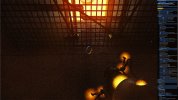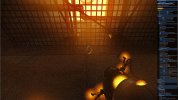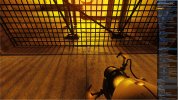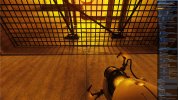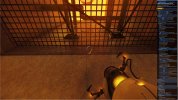Frenetic Pony
Veteran
Yeah it is terrible, but terrible as in.. it would never be terrible if you were to use those actual resolutions.
Its amazing how trickery stuff can give you big perforamnce alongside with "presentable" image. I mean look at this, they both perform similary, yet one looks leagues ahead.
Personally, I've managed to run the default config (with 3 bounces, RTDI and RESTIR on), 1440p dlss performance at around 40-45 FPS on my 3070. I find the whole "it is unplayable, no card can run this" as hyperbole.
1440p dlss perf with 3 bounces;

ofc I would like to run this game at 4k/dlss perf at least, but at this point I can't ask for more. its a 3070. tbh, its not meant for path tracing but I'm grateful it can run it at all.
That is indeed the good news! While Nvidia might not care about making their tech demo stuff runnable, it doesn't mean users can't make it runnable. I wonder what settings tweaks will be available for The Witcher 3 next gen update.

